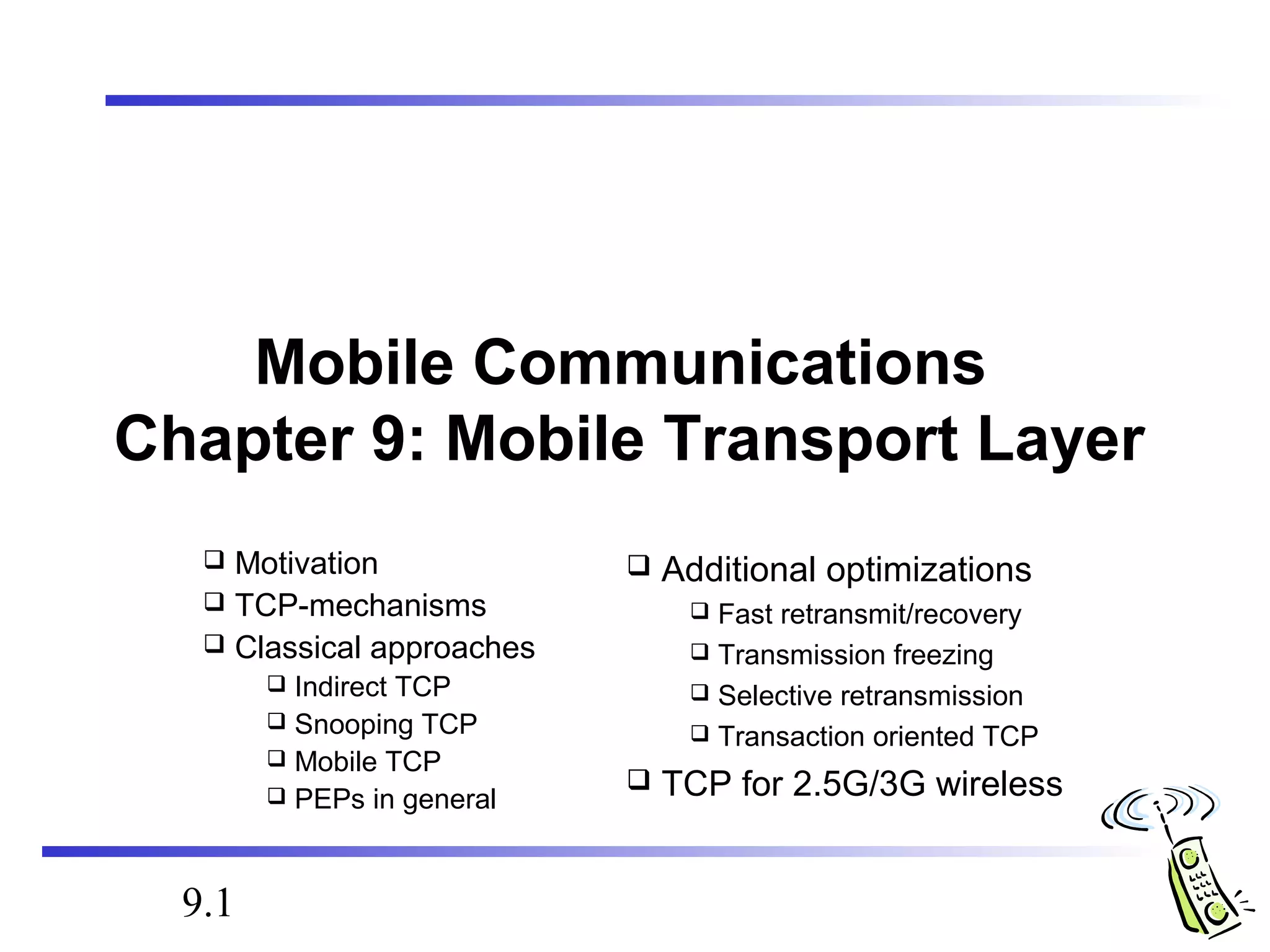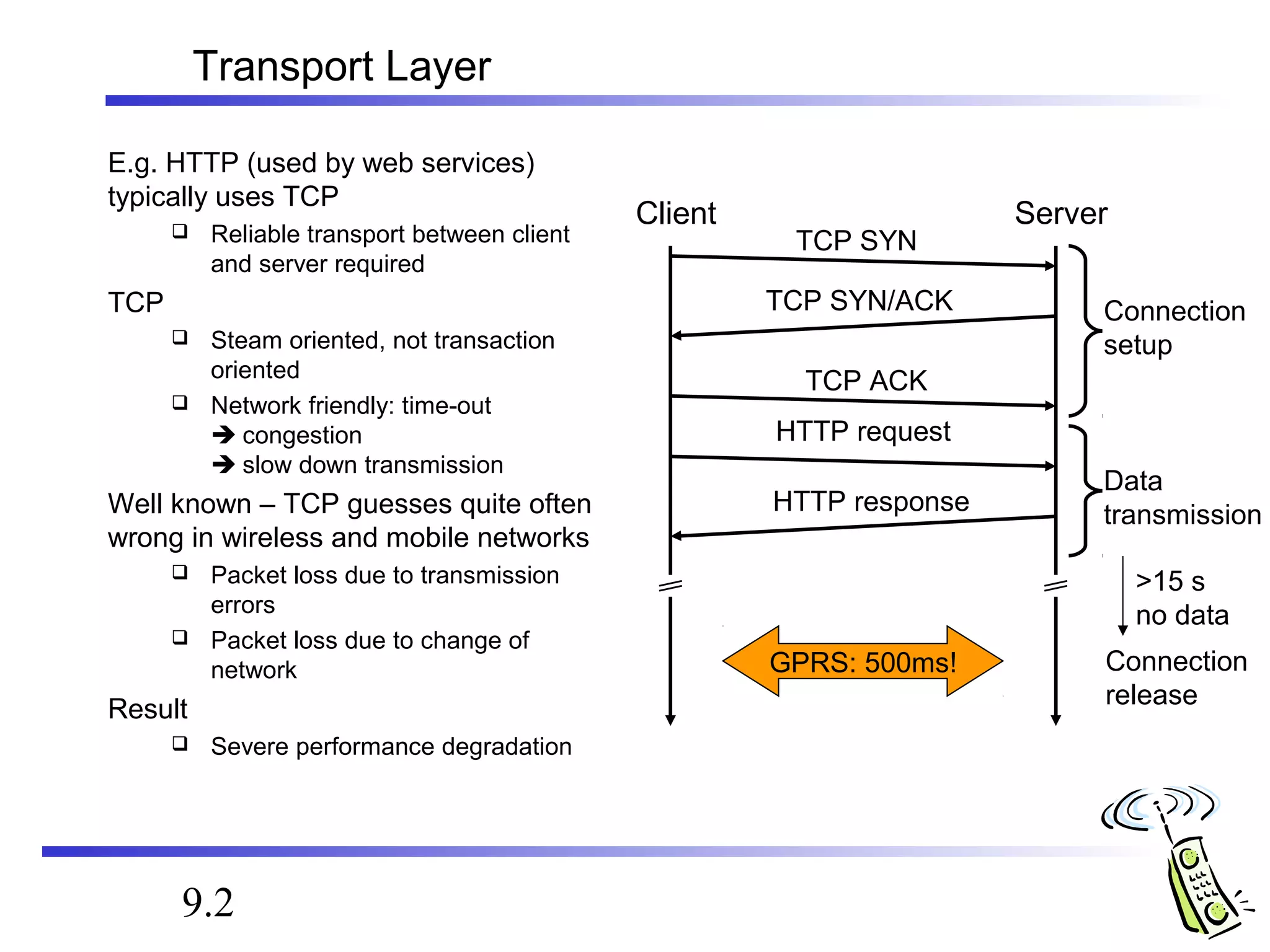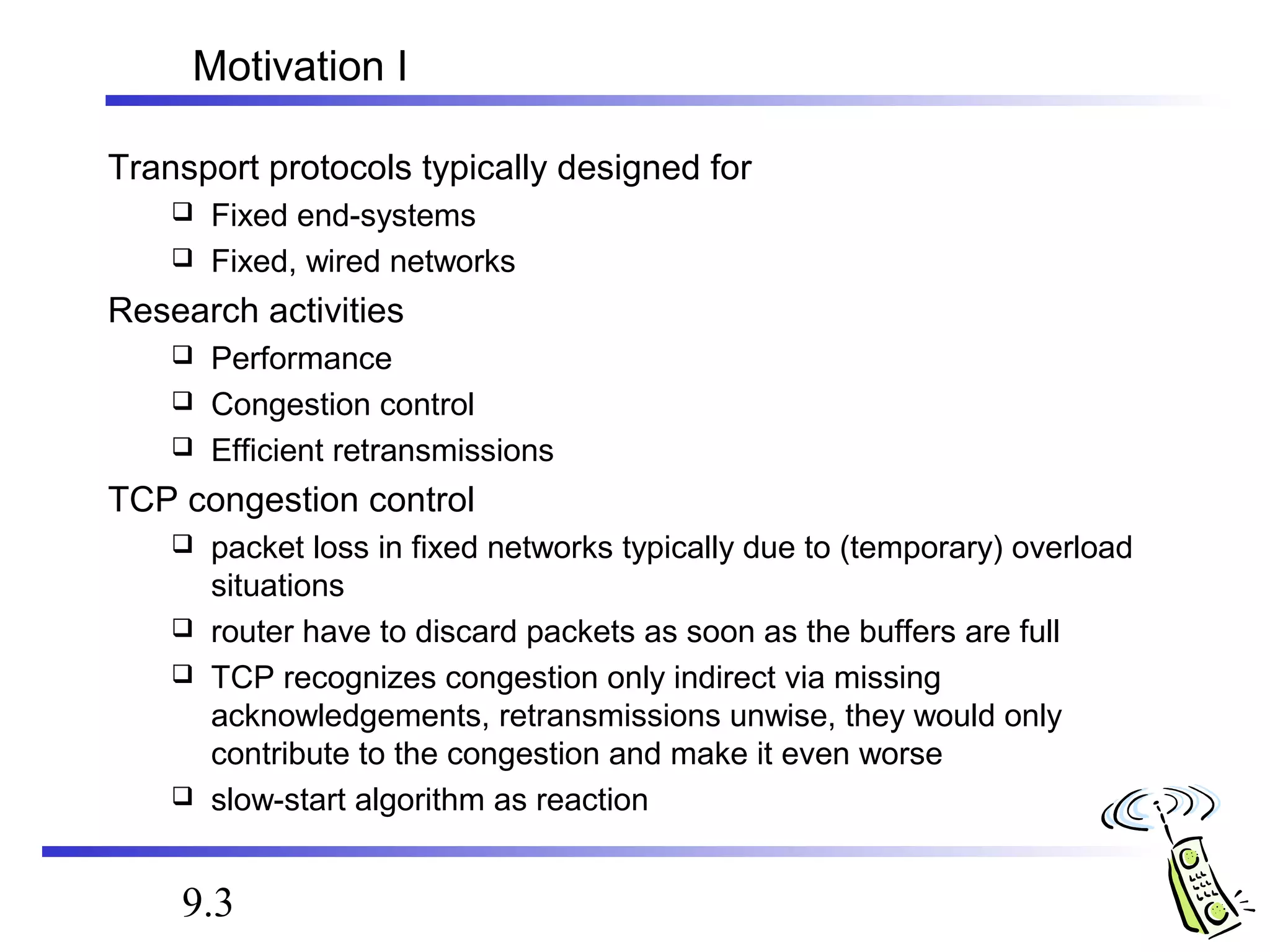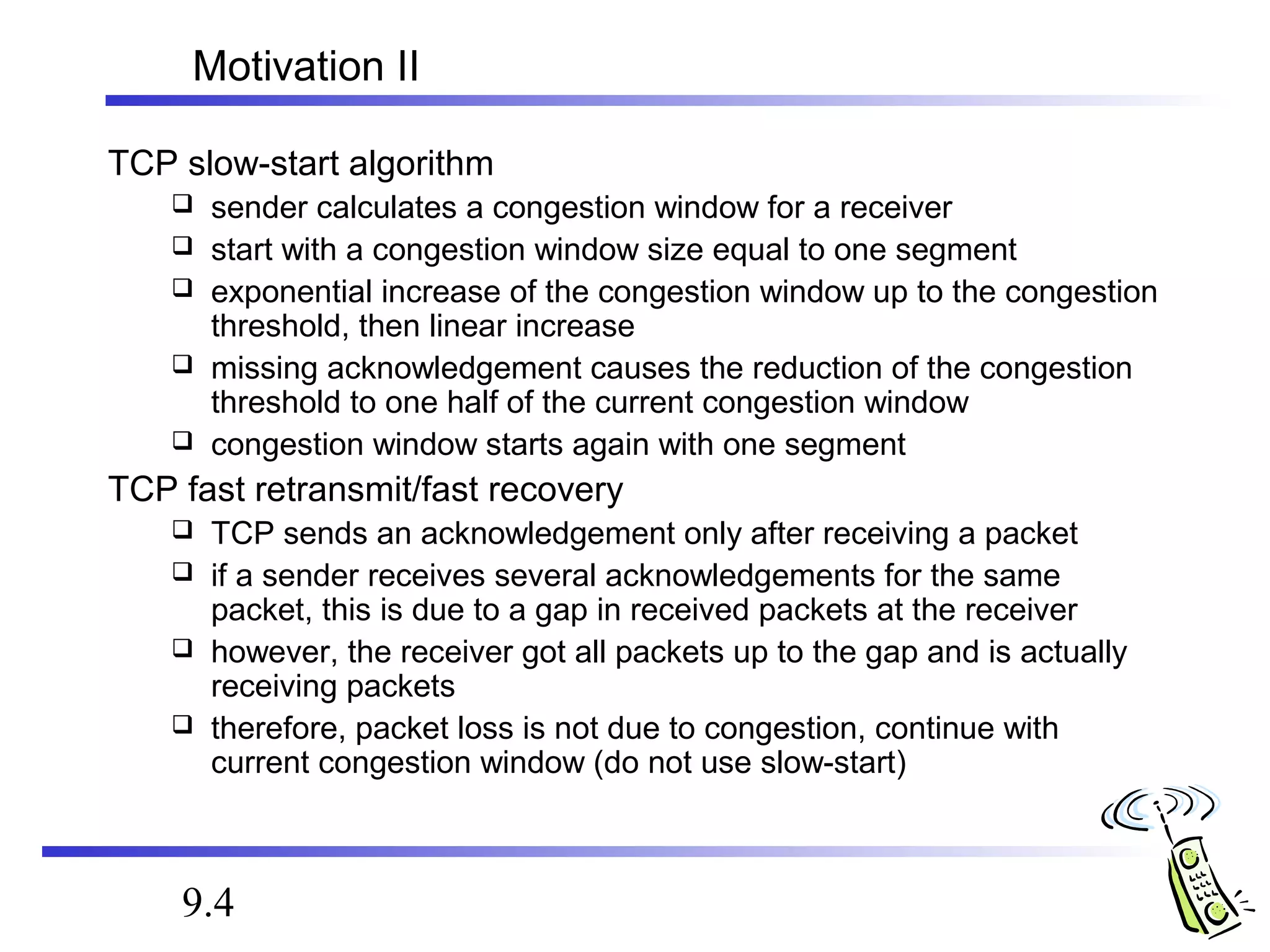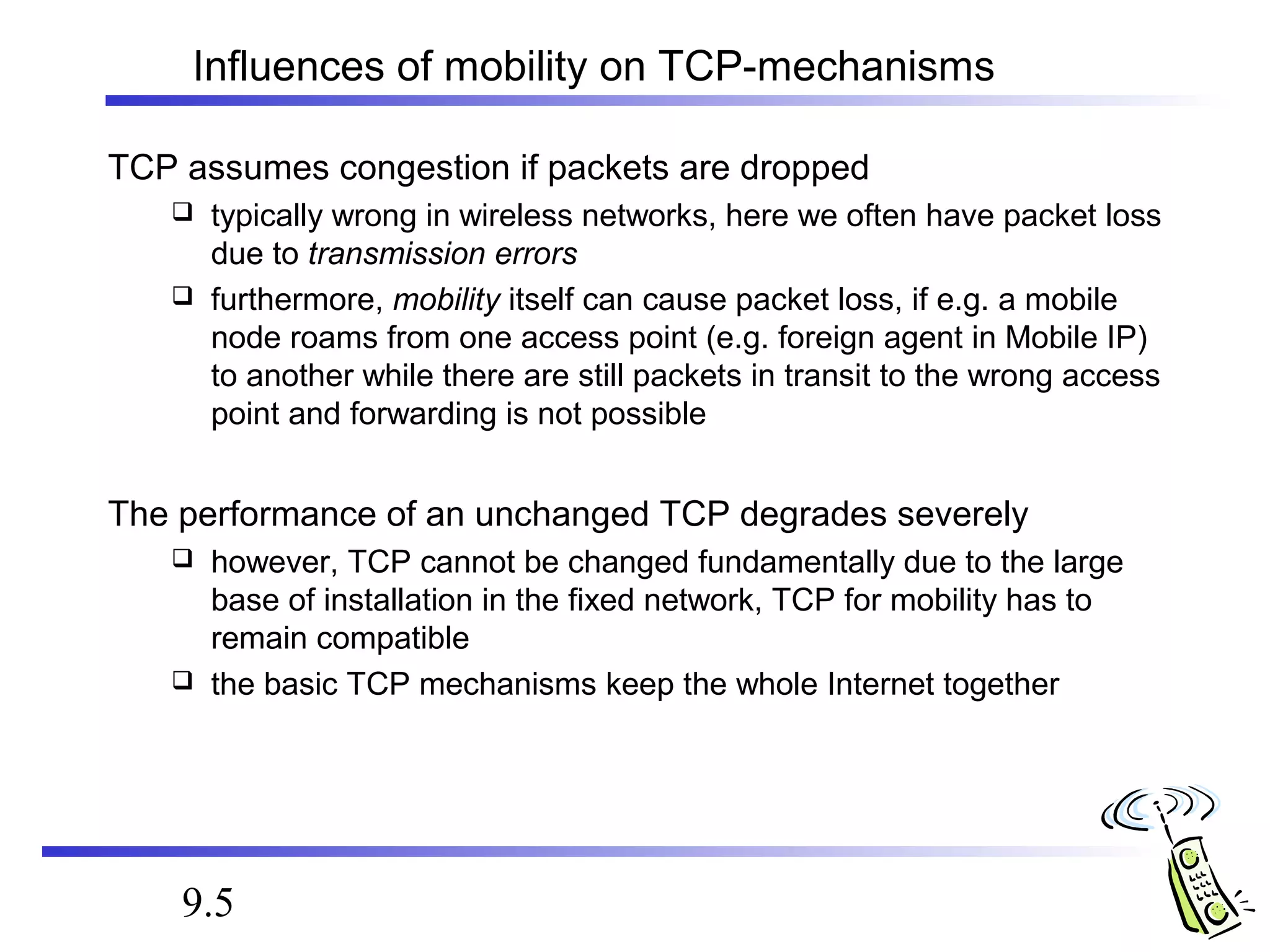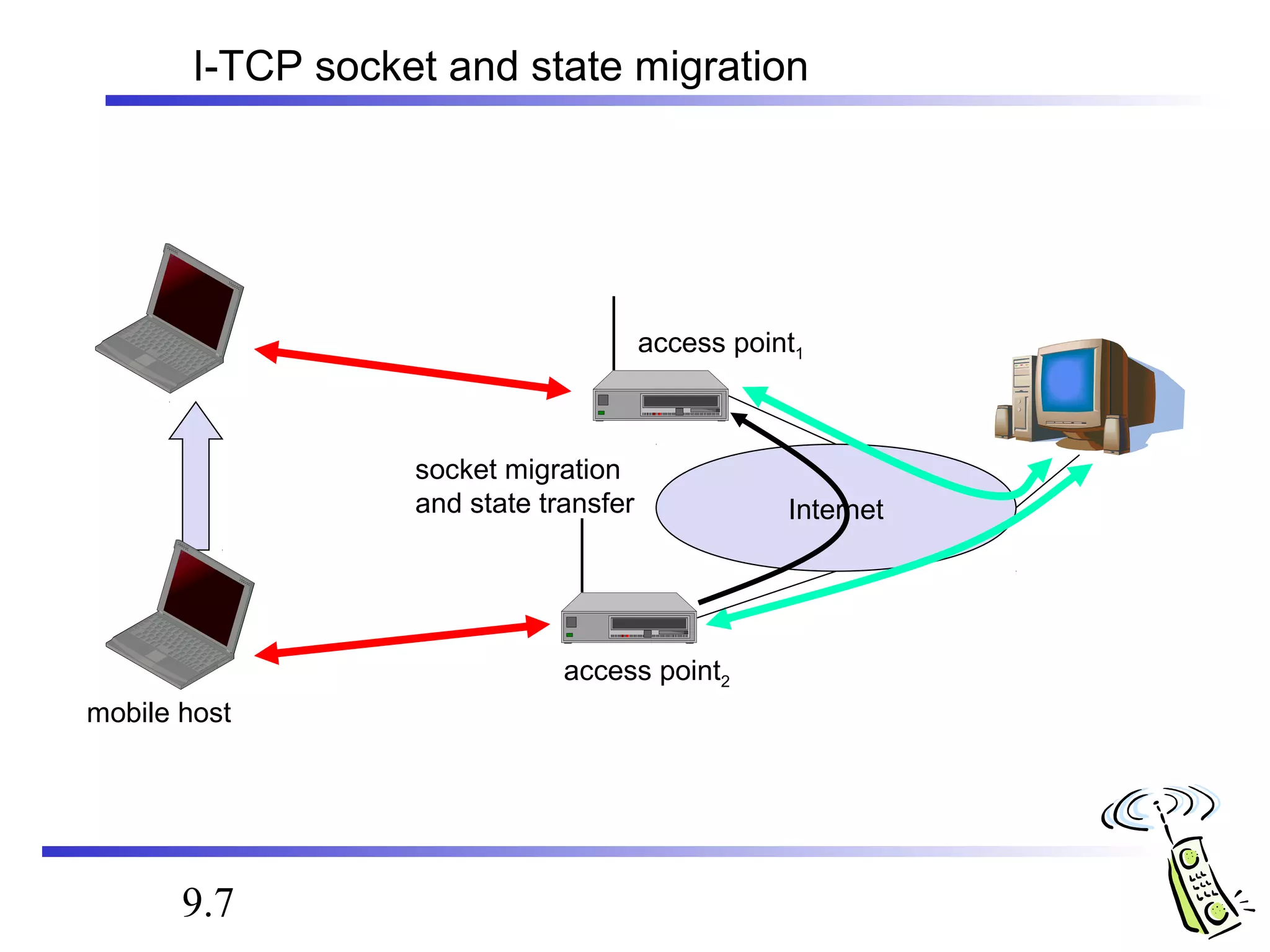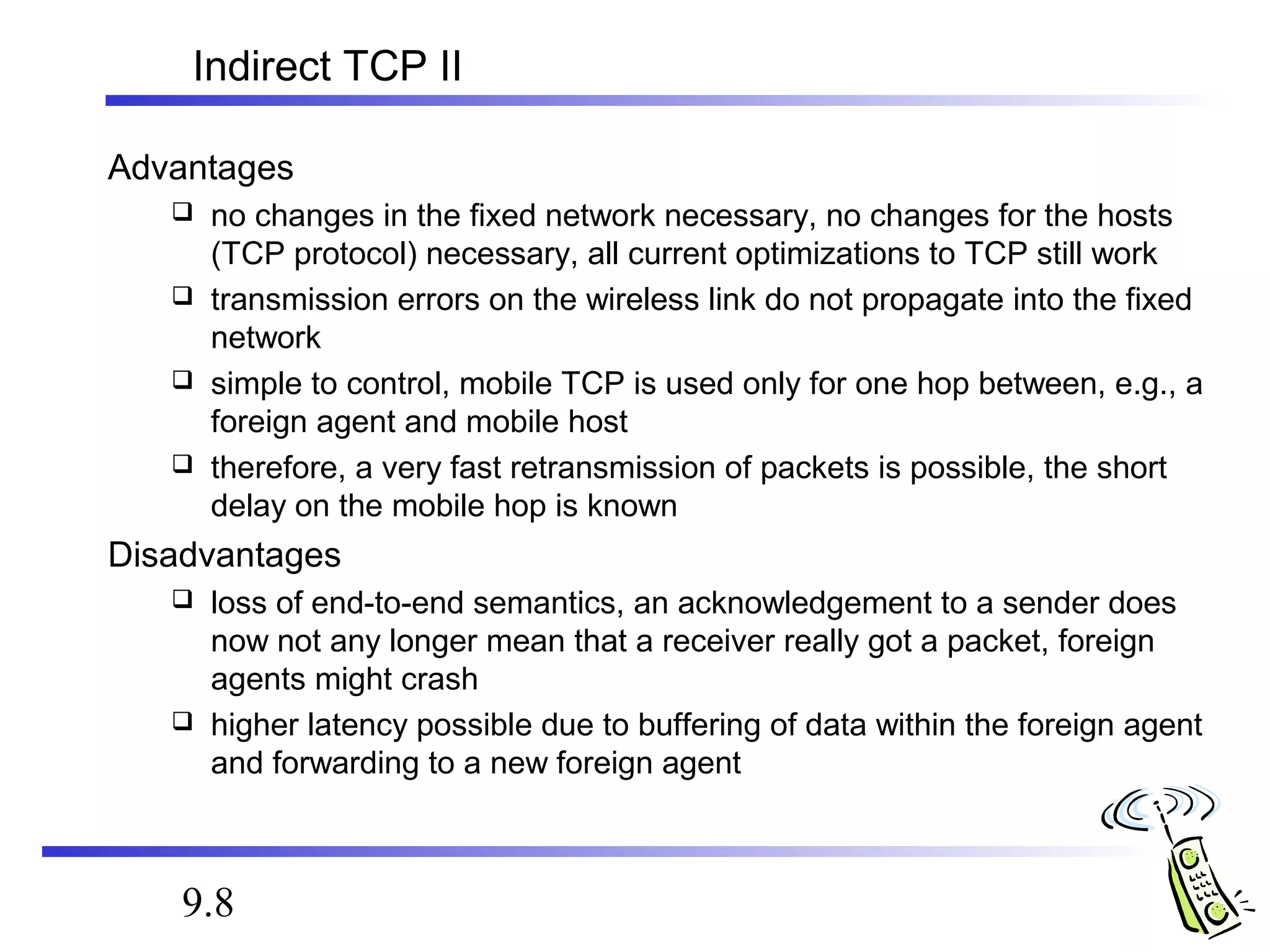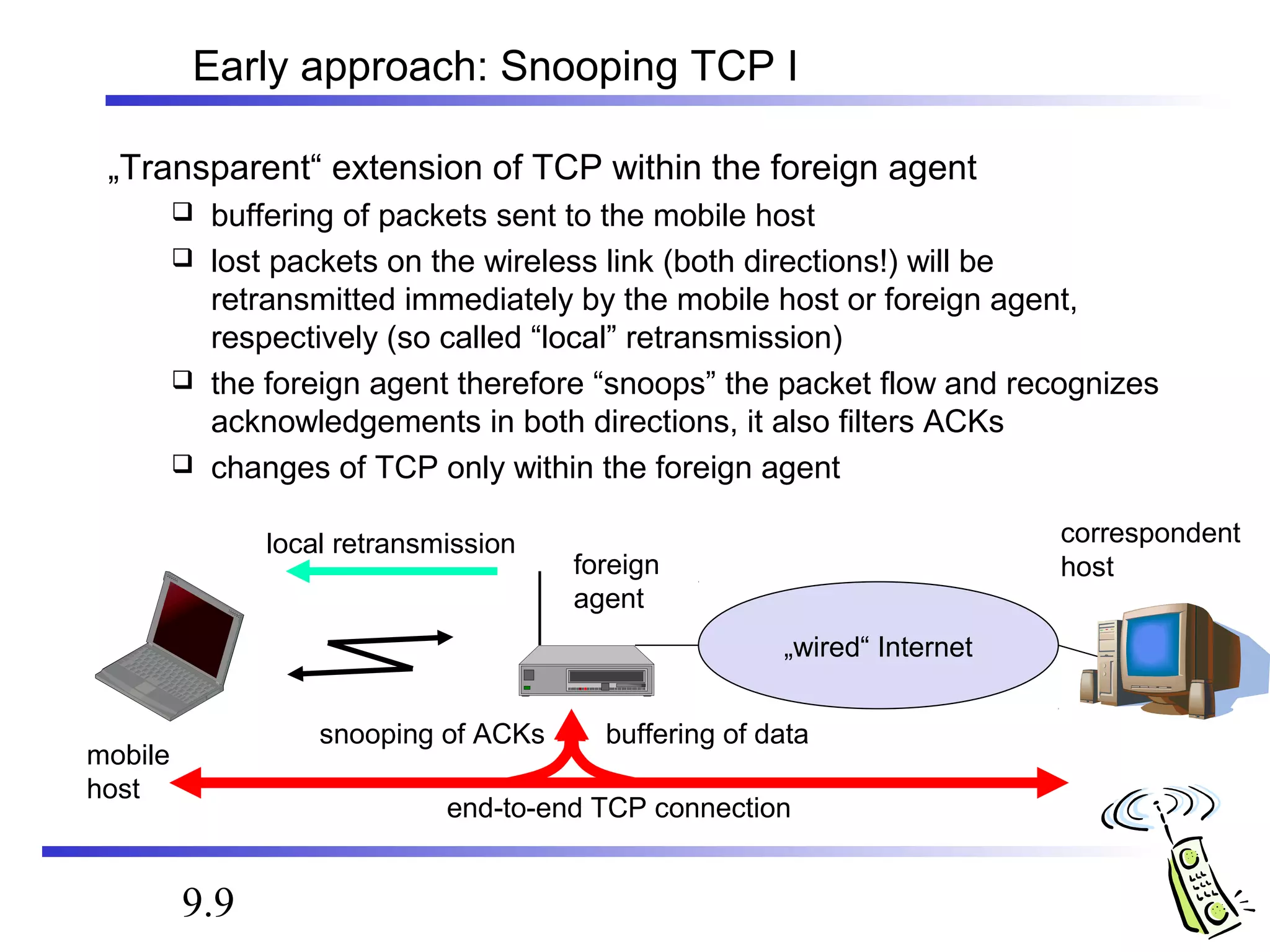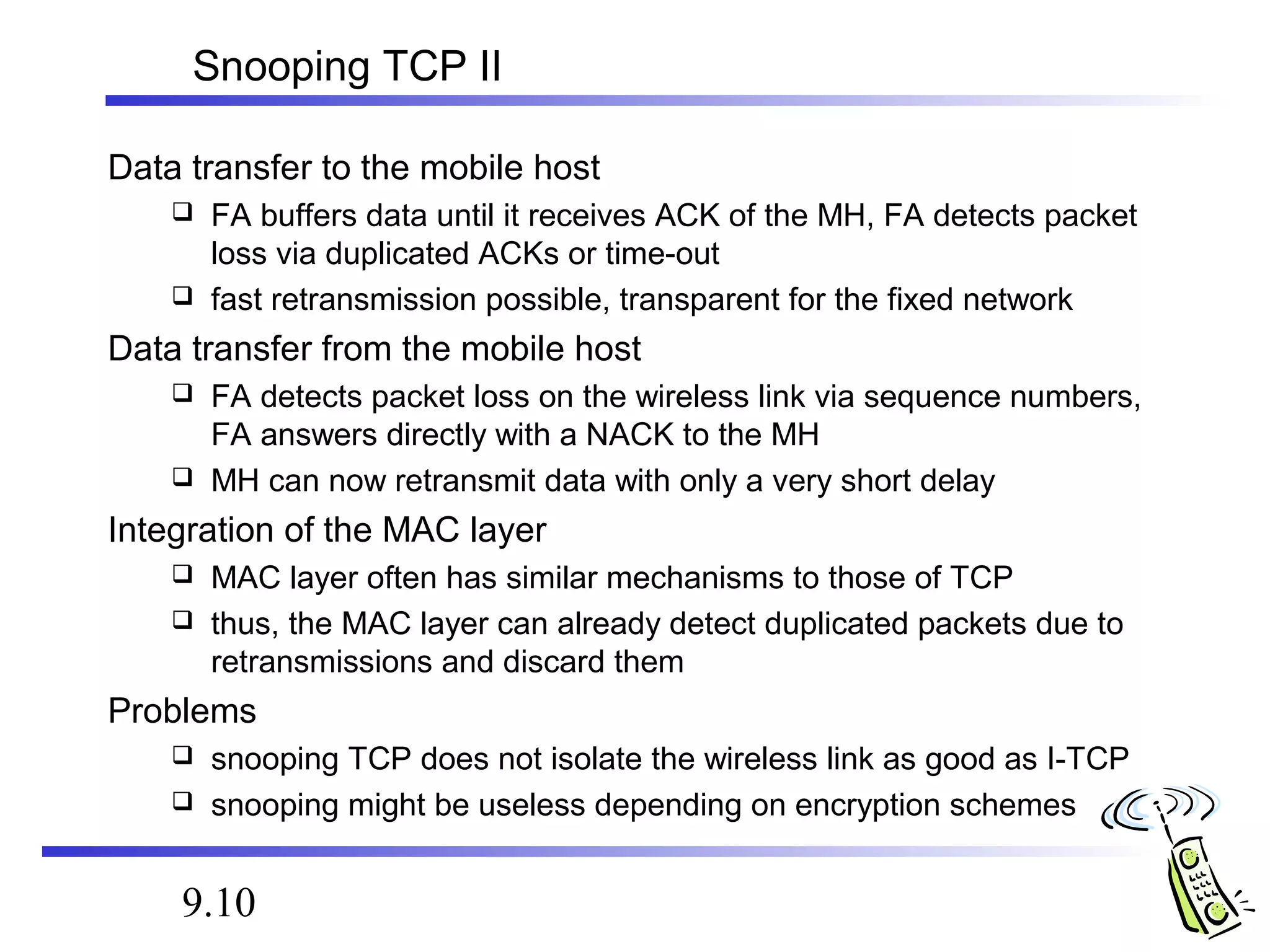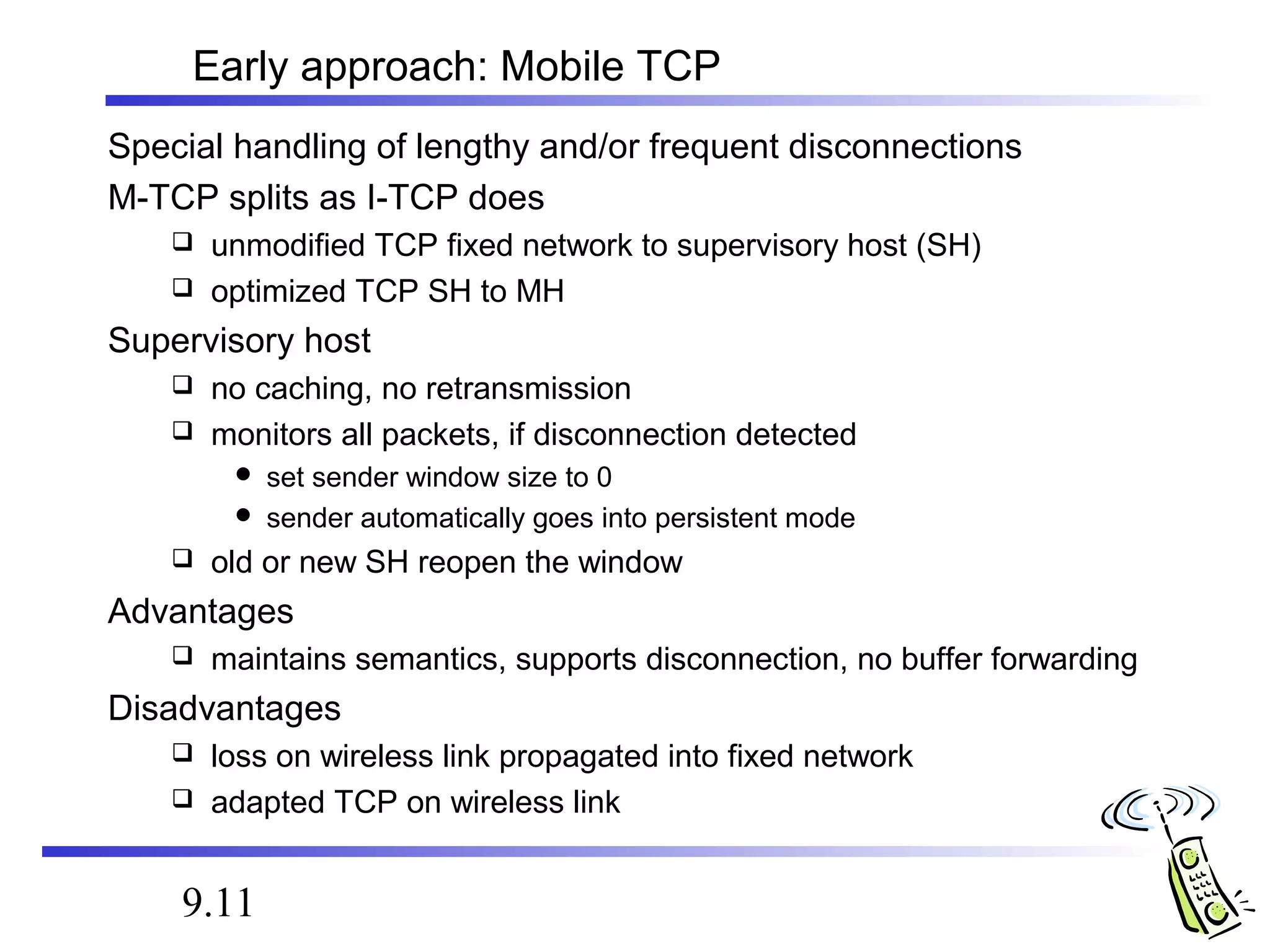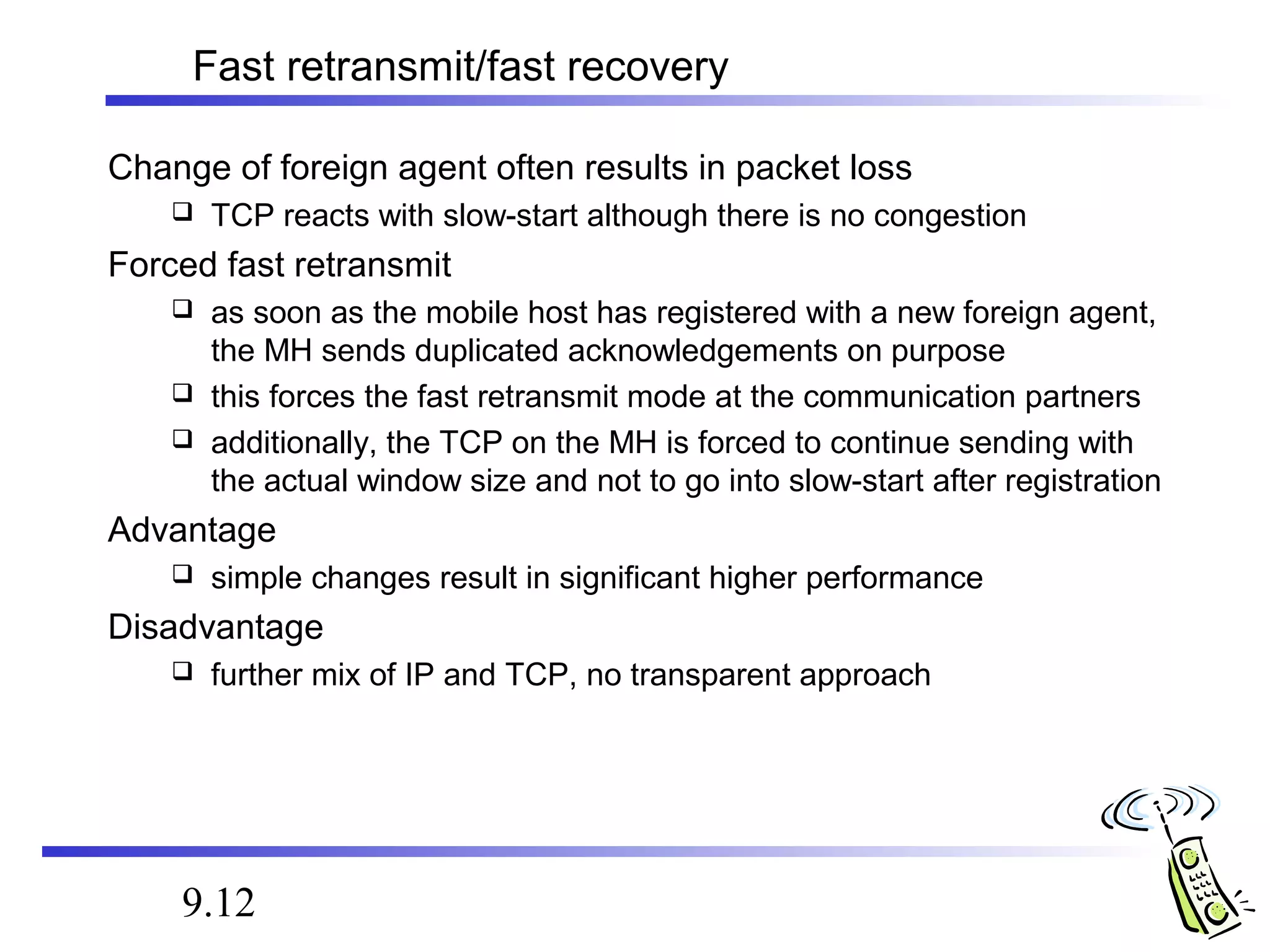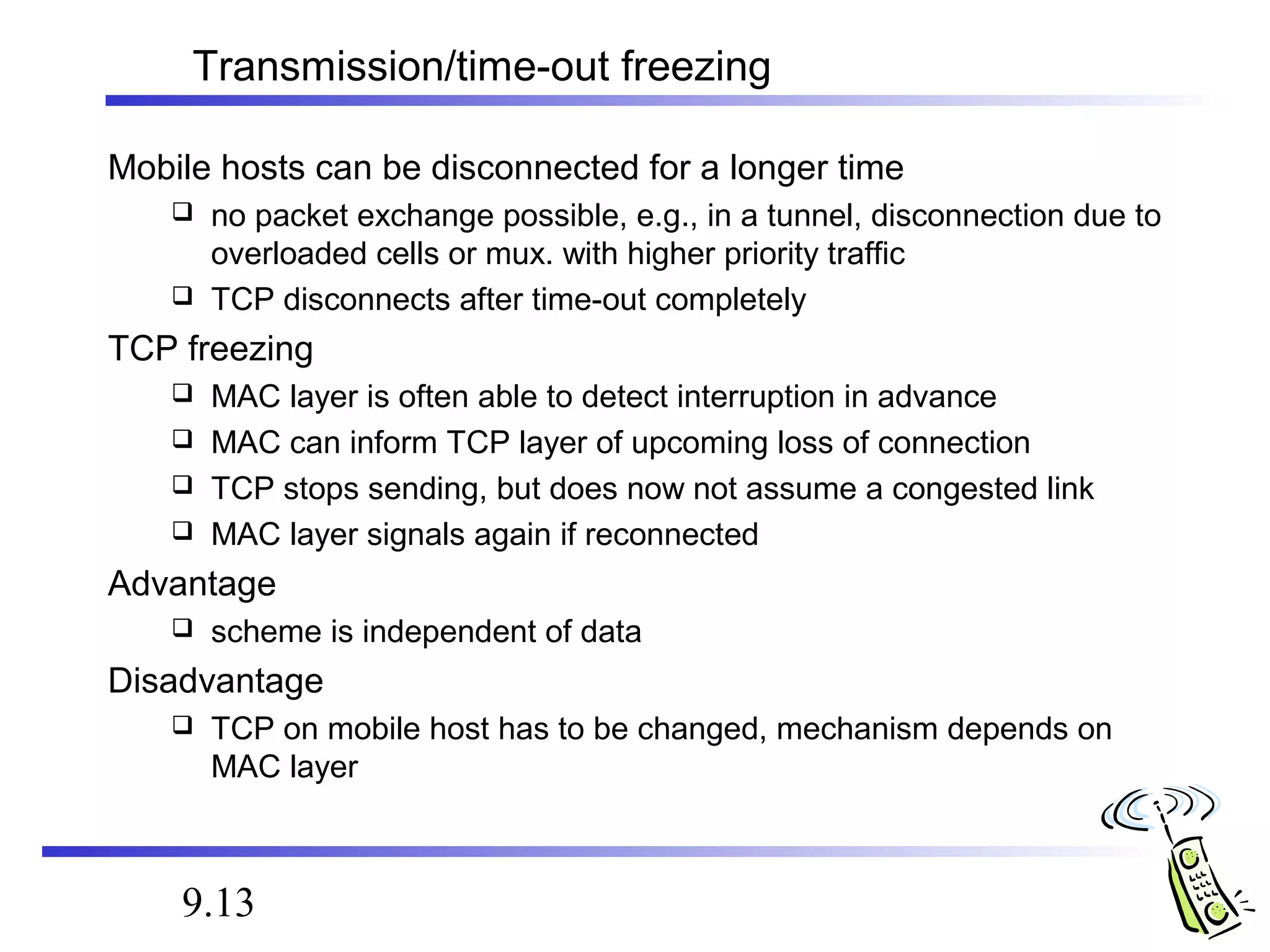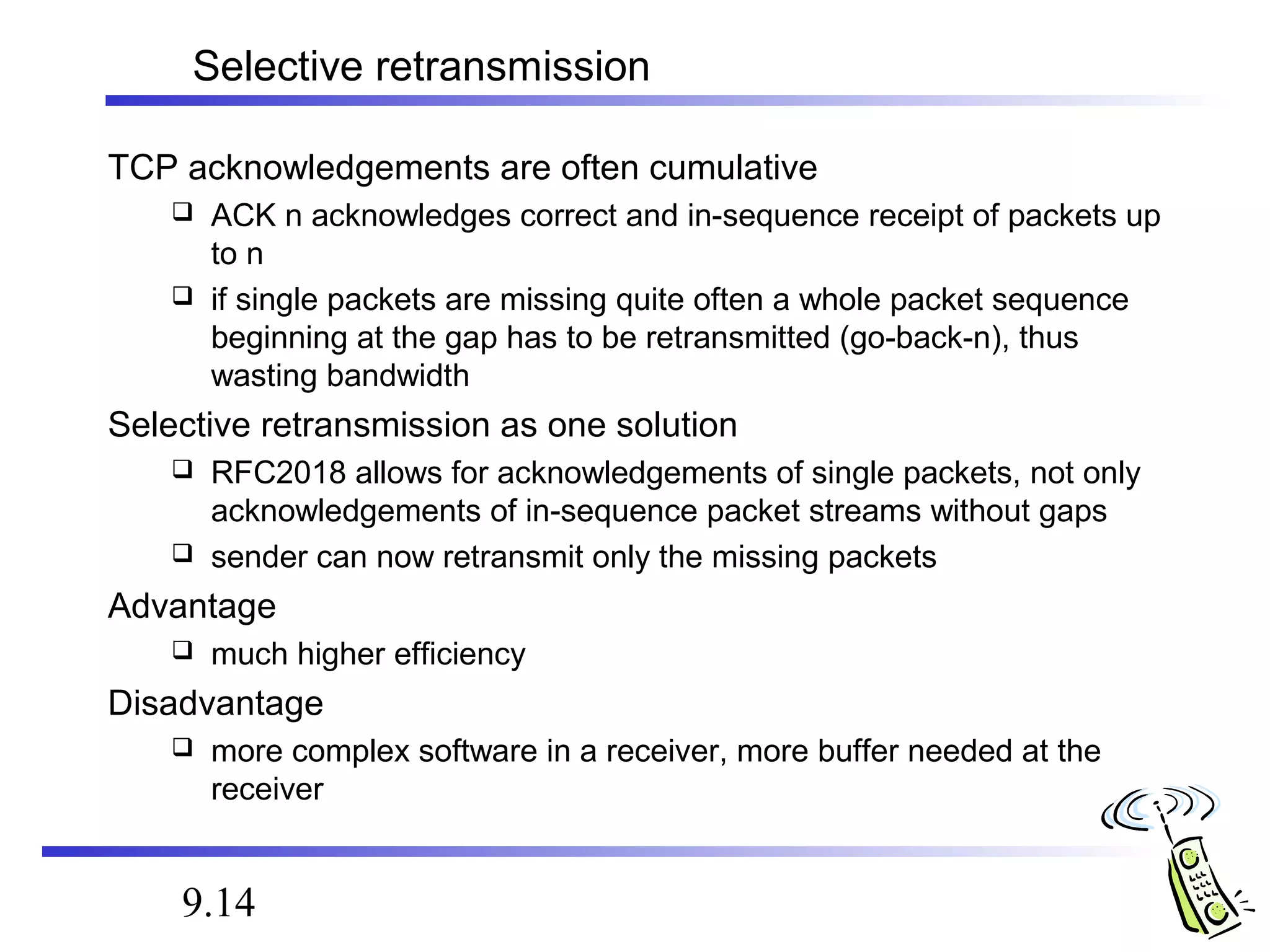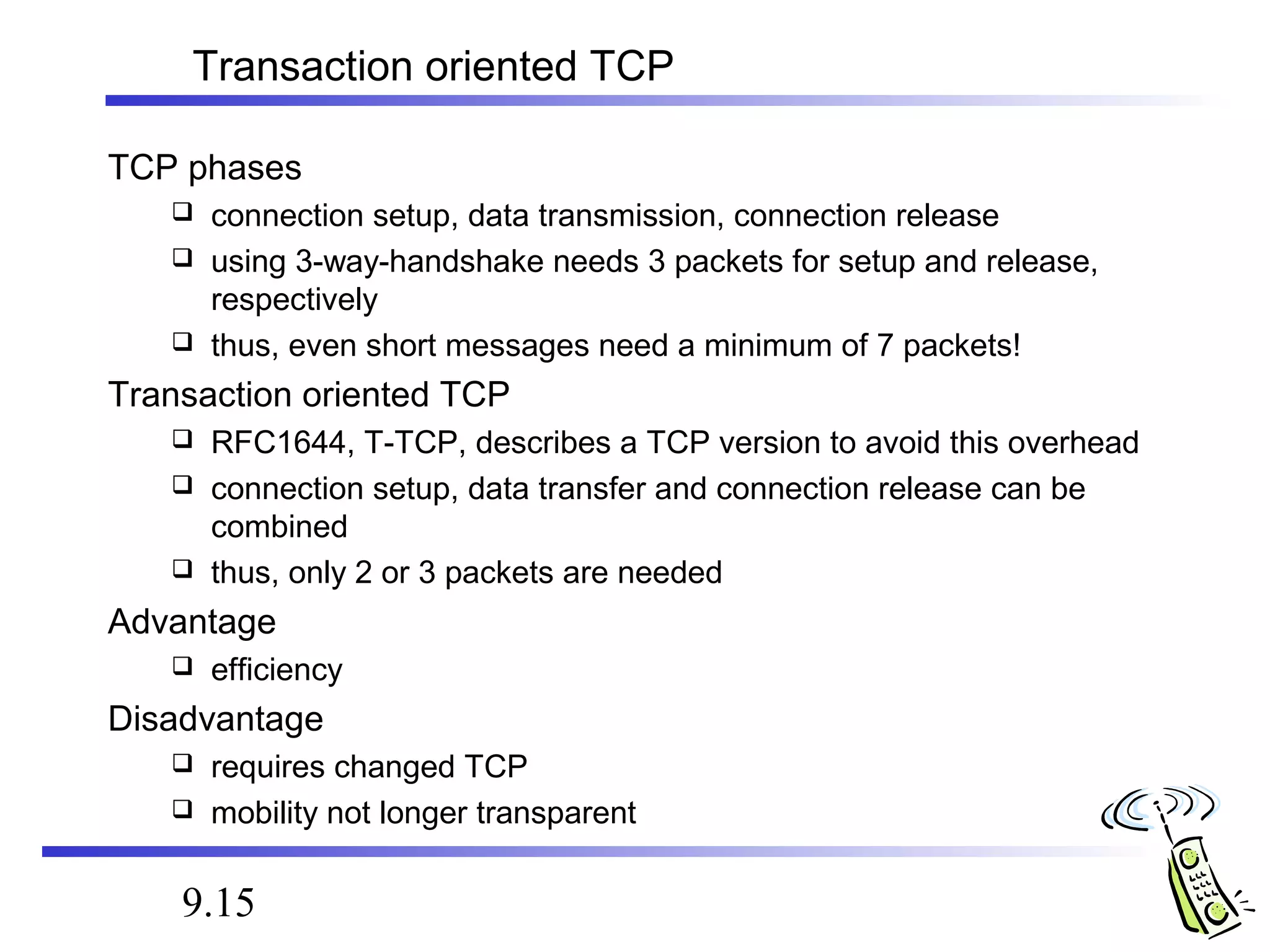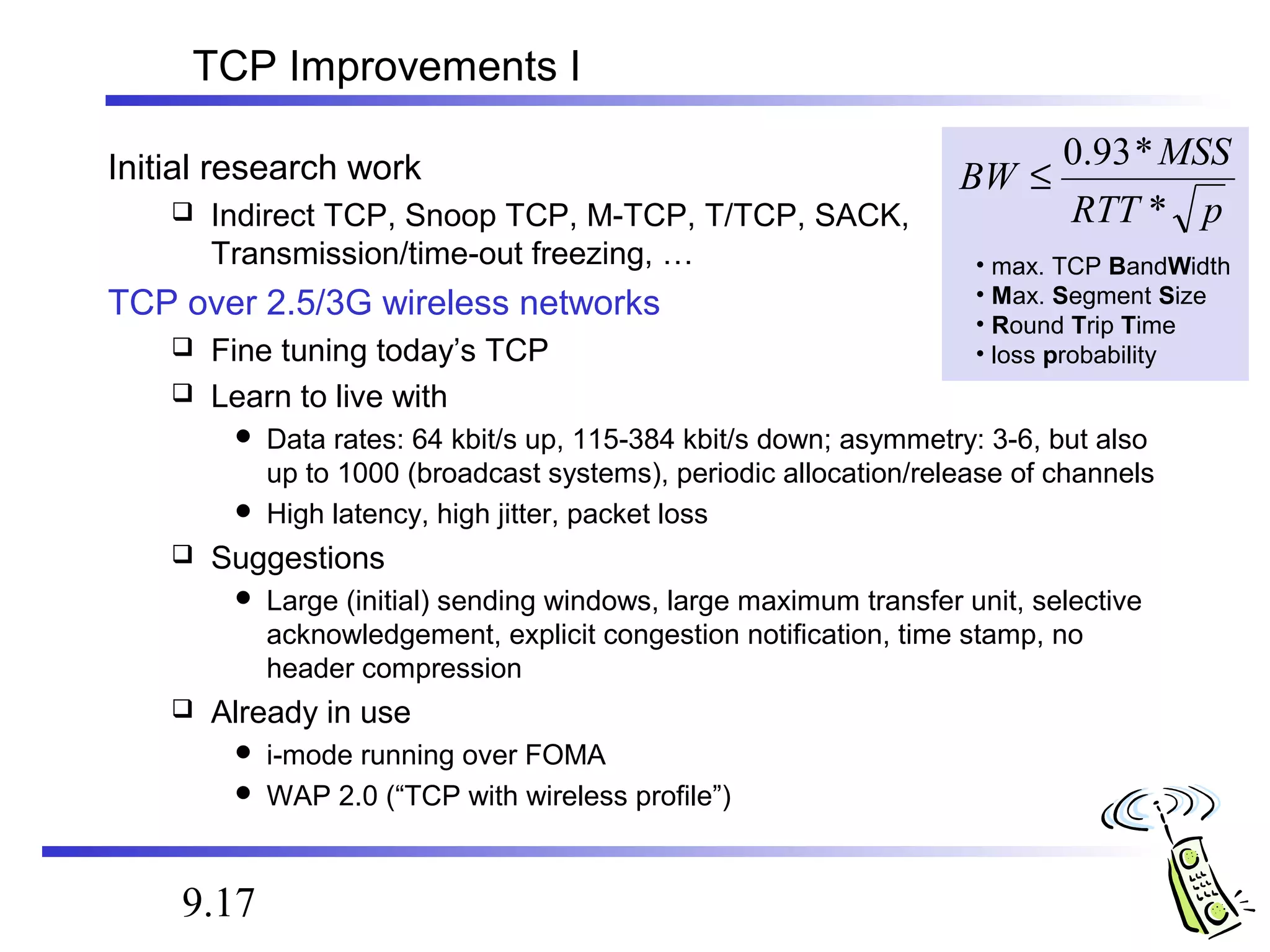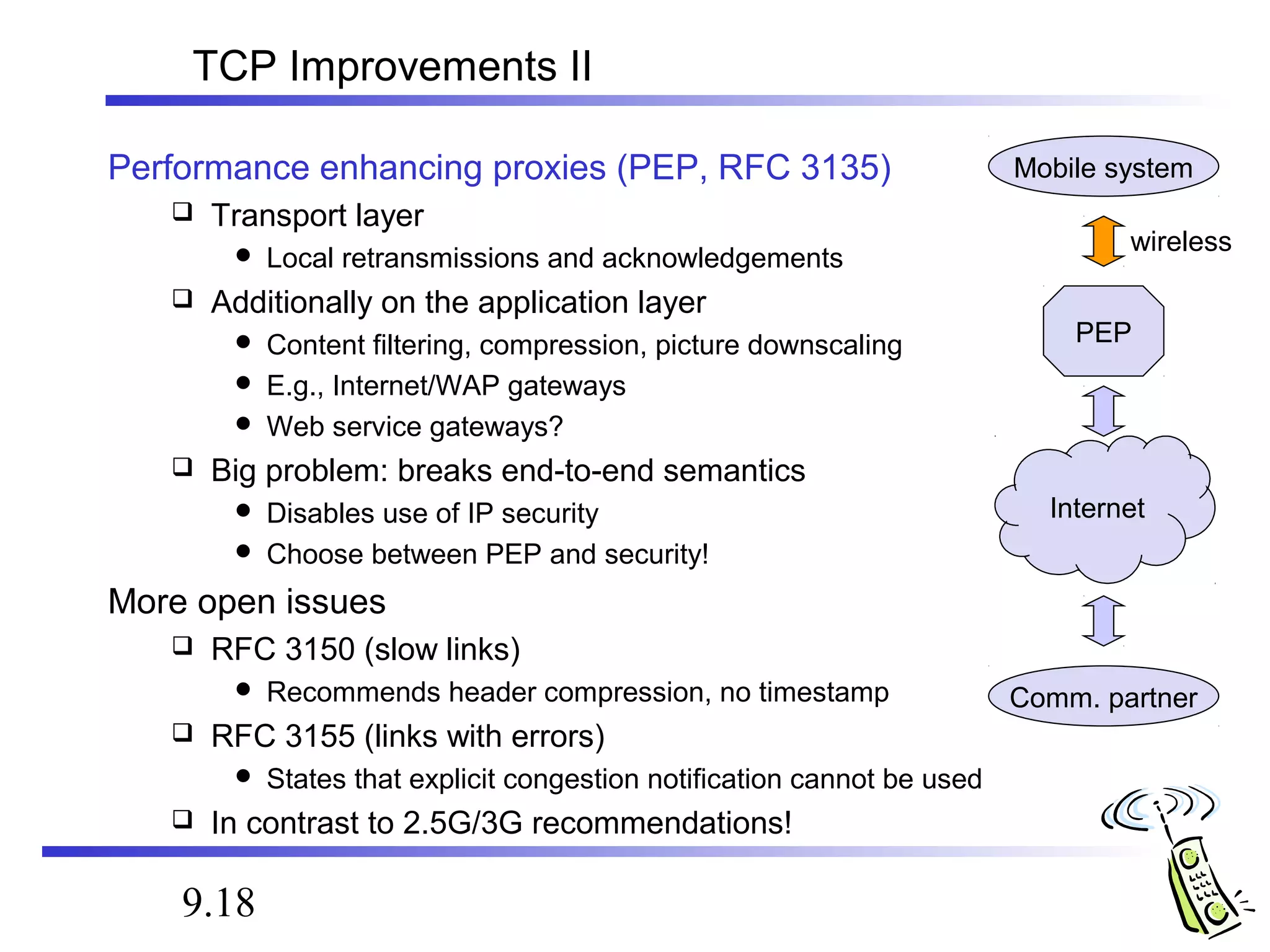This document discusses challenges with TCP in mobile networks and various approaches to address them. It introduces indirect TCP, which splits the TCP connection to isolate the wireless link. Snooping TCP has the foreign agent snoop packets and acknowledgements to enable local retransmissions. Mobile TCP uses a supervisory host and window size adjustments to handle disconnections. Other optimizations discussed include forced fast retransmit after handovers, freezing TCP timers during disconnects, and selective retransmissions. The document compares the advantages and disadvantages of these different "mobile TCP" approaches.
